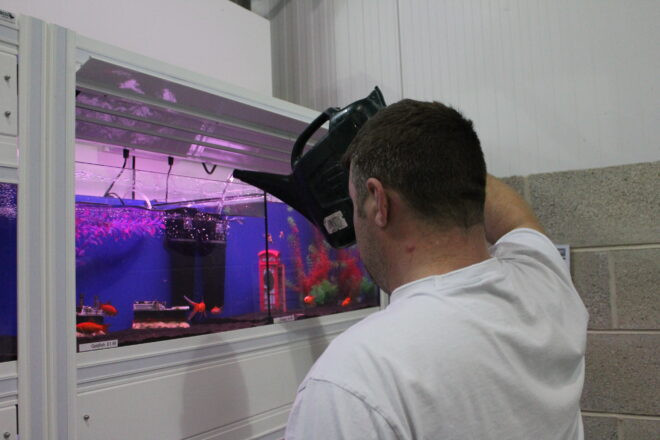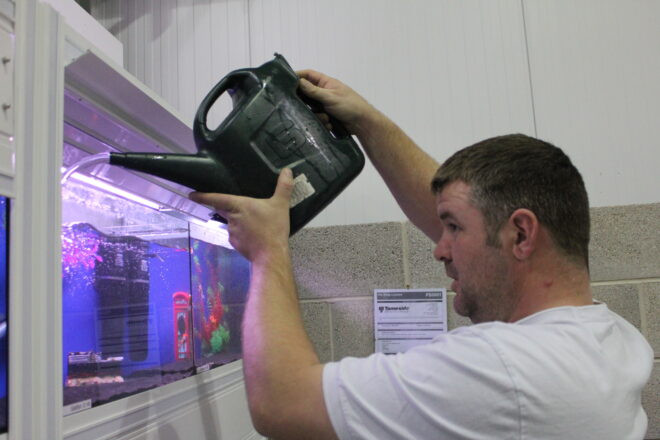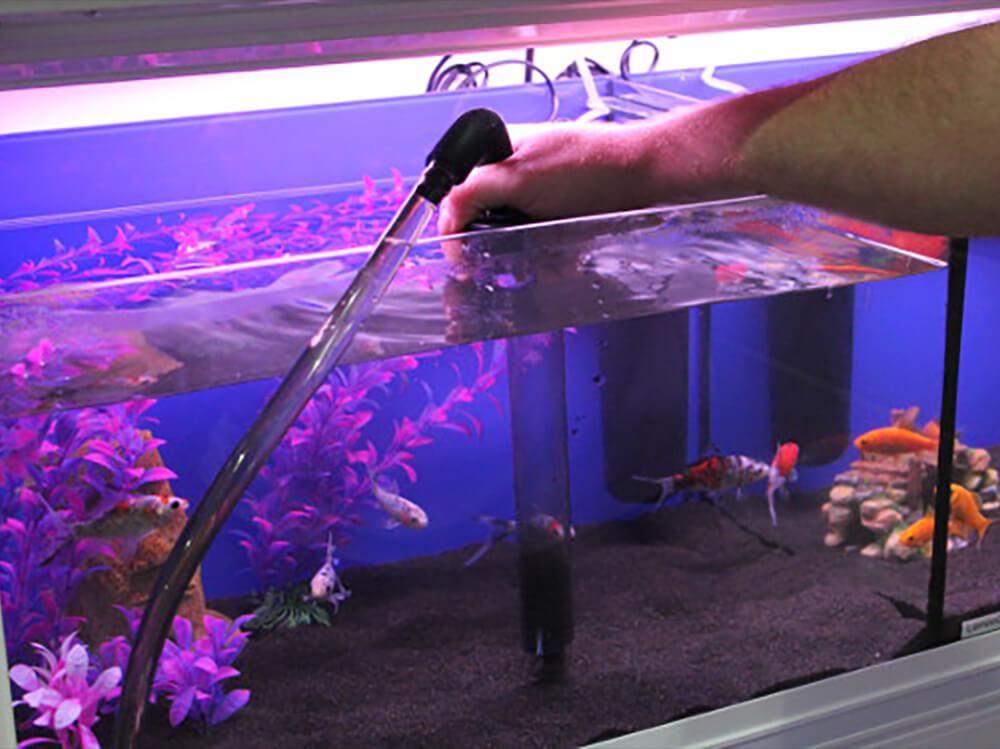How to clean your fish tank
When you first get a fish tank it is easy to spend all of your time admiring the beauty of the fish that live inside it, spending hours watching them swim around and listening to the trickle of the water emerging from the filter and going back into the tank. But as beautiful as your aquarium might look, its chemistry can be far from ideal. Inside the water, are thousands of bacteria and chemicals, some of these can be good, helping to keep your fish and plants healthy, others however, can wreak havoc and cause serious problems. Ammonia is one of the worst chemicals that you are likely to come across at some point. It is often referred to as the invisible assassin as it goes unseen to the naked eye. It can cause a number of problems for your aquarium, such as ammonia poisoning, which can prove fatal for your fish. To avoid problems like ammonia and algae, it is important to regularly clean your fish tank. This doesn't have to be a long process, it can be fairly quick and easy to do. The main things you'll need are:
- A bucket
- A gravel cleaner
- Dechlorinator
- Treatments and additives if there are any existing problems.
A test kit can also help when cleaning your aquarium, these can be great to check the quality of your water before and after a water change in order to monitor levels of chemicals such as ammonia. In the Swell office we have a few fish tanks of our own. Swell advisor, Ben Mudderman has kept fish for 15 years and currently has two aquariums at home. He conducts regular water changes on the cold water tanks that we have at Swell HQ in order to keep them clean and healthy. This is how he does it:
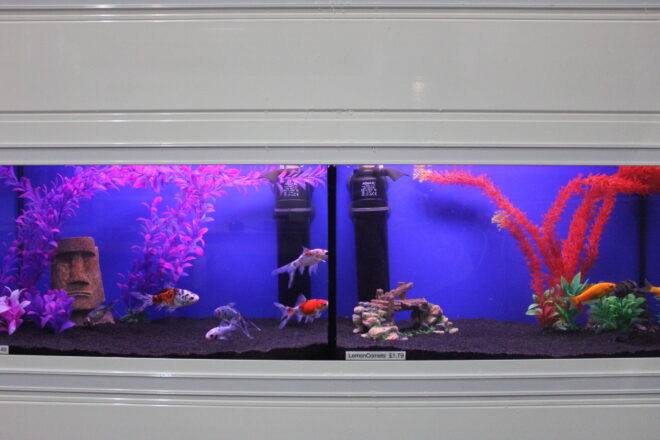
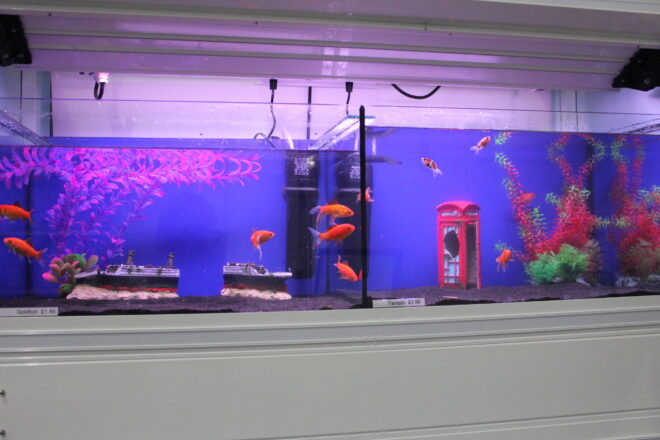
Ben starts by using a gravel cleaner (pictured below) to suck out all of the bits of waste and debris from the bottom of the fish tank. Luckily, this is not too much of a difficult task in these tanks, because there is plenty of space and the plants do not need to be removed in order to reach all the little nooks and crannies that are common in more crowded fish tanks. In a smaller aquarium, you may find yourself having to remove any artificial plants and decor to make the job easier
. 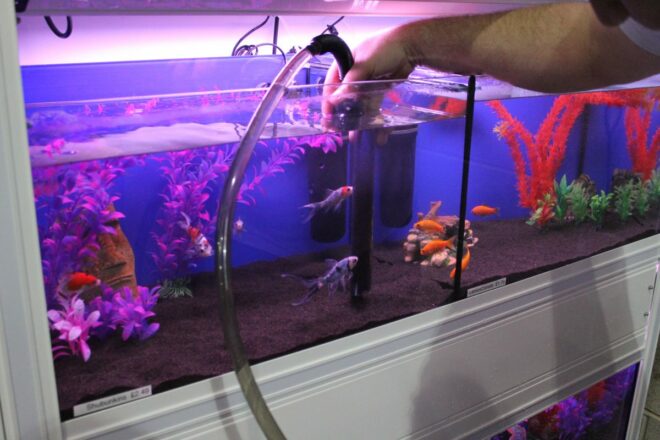
One end of the gravel cleaner is placed inside the fish tank, and the other end is placed in the bucket, to collect waste and water. A gravel cleaner is not only a great way of removing fish waste, but it also makes the water change process much easier, sucking out a percentage of the water at the same time and saving you having to use a jug to remove water. When conducting a water change, it is usually recommended that you change approximately 20% of the water. If your aquarium is suffering from ammonia problems, changing a slightly higher percentage on a more regular basis can be helpful to tackle the problem. Removing too much however can shock the fish by exposing them to water that is not of a quality that they are familiar with.
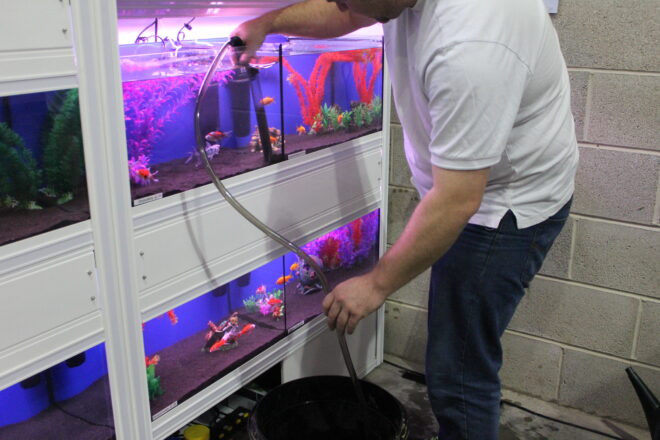
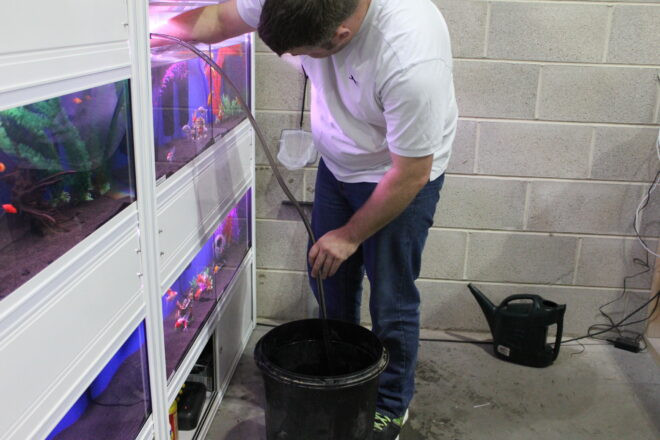
While cleaning your fish tank and doing a water change, it can be a good idea to give the filter and filter media a clean too (pictured below). It can be surprising just how filthy this can all get within a week or two. Never clean your filter media in tap water though. Instead, use old aquarium water. Ben tends to take the filter media out of the filter and soak it in the bucket containing the old water for a few moments before squeezing the dirty water out and reassembling the filter with the media included.
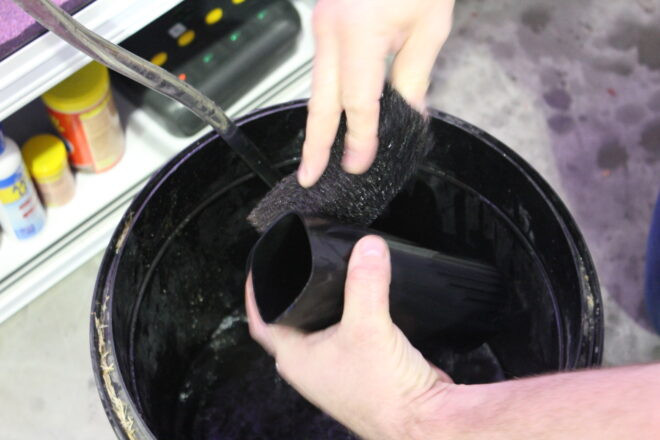
Next, get a clean bucket or watering can (pictured below) and fill with either tap water or water from an RO Unit. If using water straight from the tap, make sure that you have used a good dechlorinator to remove chlorine from the water. Chlorine is common in tap water and is used to remove contaminants such as ammonia so that it is safe for humans to drink, but this chlorine can still be bad for your fish. Once you've added dechlorinator and any other necessary water conditioners, it is time to refill your fish tank.
